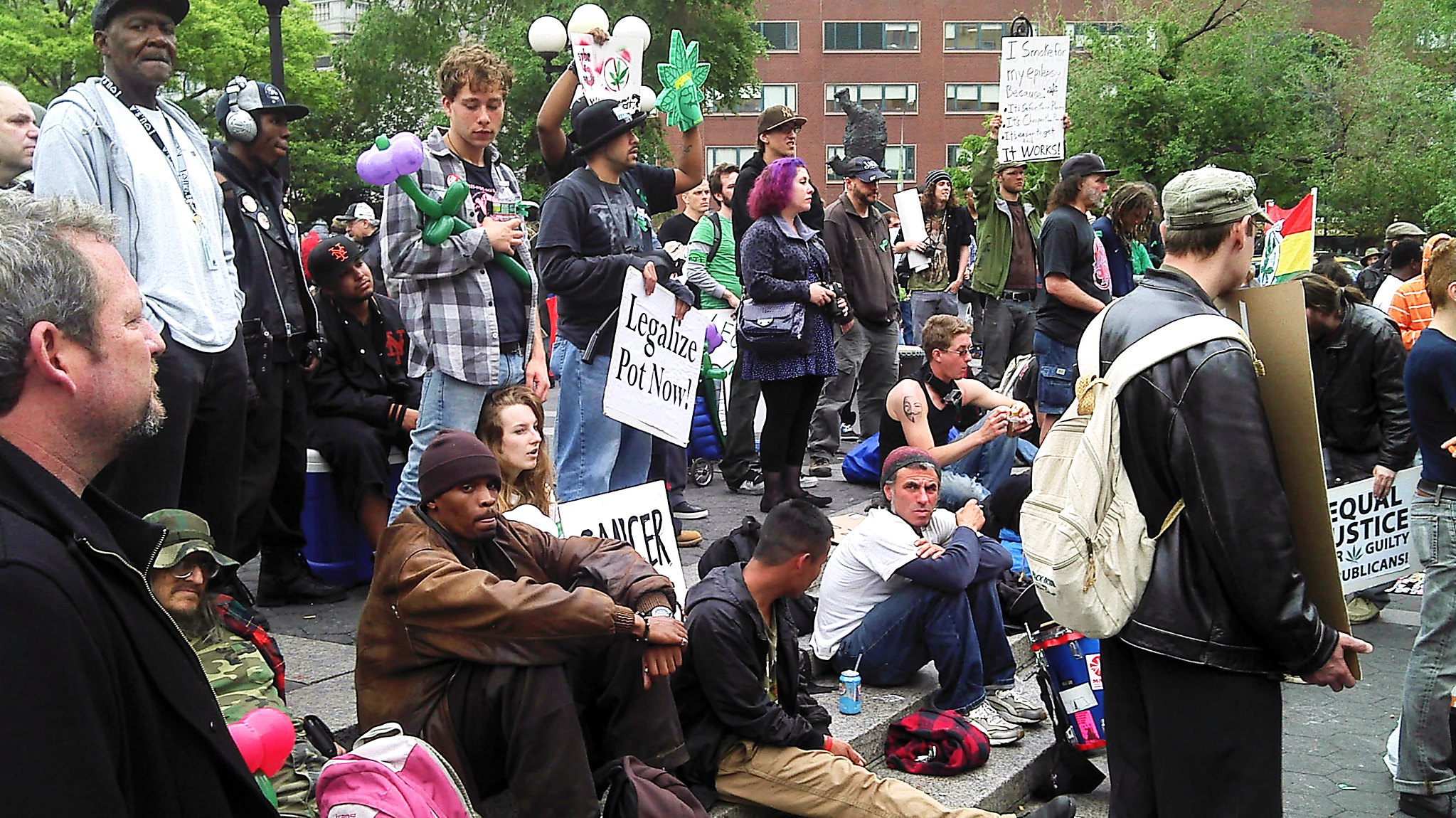

Marijuana arrests in New York City have dropped to the single digits since former Governor Andrew Cuomo signed the state’s legalization bill on March 31—with just eight arrests recorded in the city in the second quarter of 2021. The decrease, which is far greater and faster than in other states that have legalized, will raise hopes that marijuana legalization in New York can live up to its racial justice promises.
In the first quarter of 2021, before legalization took effect, New York City saw 163 arrests for marijuana possession. Police arrested people both for holding quantities of marijuana that were decriminalized back in 2019 (under two ounces), and for quantities that were over the decriminalization limit. (When Cuomo signed a bill to decriminalize marijuana possession in July 2019, it meant that anyone caught with up to two ounces could be given a fine of up to $200 and not arrested.)
People still being arrested for quantities no longer considered criminal may seem absurd. But police were still given much discretion and latitude. People apprehended by police without identification, or those who were not New York residents, could still be arrested. And if police suspected someone of selling marijuana in any amount, they could arrest them.
Demographically, over 90 percent of people arrested were Black or Latinx, and nearly all were men. Over 80 percent were age 34 or under. These numbers reflect the targeting that we have seen for years in New York and many other jurisdictions.
When New York State finally legalized, it followed years of failed efforts to do so in the legislature. Upon Cuomo’s signature, marijuana possession was immediately much more broadly decriminalized . Adults over 21 could now possess up to 3 ounces of cannabis flower in public. And adults could smoke marijuana in public—anywhere tobacco use is also permitted.
Throughout the quarter ending in June, marijuana possession arrests then dropped dramatically in New York City, from 163 in Q1 to just eight in Q2. These arrests were for a newly created category (Penal Code 222), which broadly includes everything from the civil violation “unlawful possession” to the felony “criminal sale” of cannabis.
The massive decline in summonses is also a major success that will keep more people out of jail.
In the largest city in the United States, with a population well over 8 million, this amounts to a significant achievement. The small number of remaining possession arrests were for quantities greater than 3 ounces. The new numbers still show racial disparities for Black and Asian residents, though the small sample size means scrutiny over a longer period will be needed.
Criminal court summonses also fell over the same period, from nearly 3,700 to (again) just eight. Summonses occur when people are issued tickets for marijuana possession but don’t pay them, and can result in arrest warrants if people don’t appear in court. So the massive decline in summonses is also a major success that will keep more people out of jail.
New York’s progress is all the more notable when compared with experiences elsewhere. In Colorado, which legalized back in 2012, overall marijuana arrests declined—but the pattern of arrests changed, and not always in a good way.
For example, in Denver, the state’s largest city, possession arrests dropped from 1,548 in 2012 to 351 in 2014. But arrests for public display, consumption and marijuana use in public parks all increased significantly during the same period. And Black residents continued to be targeted by possession arrests after legalization, as they had been before.
We see a similarly mixed picture in Washington, DC, which legalized in 2014. Since then, possession arrests have dropped but arrests for public consumption and sales or distribution have fluctuated—rising in some years and falling in others. What has remained virtually unchanged is that the overwhelming majority of people targeted by enforcement are Black.
If given the chance, police and courts will continue finding ways to perpetuate some of the worst harms.
Illinois legalized in 2019. In its largest city, Chicago—with roughly the same population as the New York borough of Brooklyn—police made nearly 3,000 marijuana arrests last year. Nearly all the people arrested—95 percent—were Black or Latinx. The charges ranged from unlawful possession or sales to driving under the influence.
Chicago Reporter notes that for years, Chicago police have used a controversial practice of arresting and charging people for petty crimes they know will be dismissed. They do this ostensibly to deter more serious crimes, but meanwhile people spend days or weeks in jail and clog up the court system for no reason.
All around the country, elected officials and voters are repealing harsh marijuana laws. But if given the chance, police and courts will continue finding ways to perpetuate some of the worst harms and racial inequalities this movement is meant to end.
So why is New York City—for now—doing much better on reducing marijuana arrests than other places?
There are at least two important factors at play: First, marijuana decriminalization took effect the moment Cuomo signed the paper. Contrast that with New York’s neighbor, New Jersey, which actually legalized marijuana sooner, in November 2020, but delayed implementation of decriminalization for months until lawmakers could strike a deal. That resulted in people throughout the state continuing to be arrested for small-scale possession.
Legal public marijuana consumption is necessary.
The second factor in New York’s favor is that it specifically legalized public cannabis smoking. If you are permitted to smoke a cigarette somewhere, then you can also smoke weed. This is unlike most legal-marijuana states, which do not allow public marijuana smoking—reflecting the continuing stigmatization of cannabis by governments, and giving law enforcement opportunities to continue making arrests.
Legal public marijuana consumption is necessary if everyone—especially low-income residents—is to have an equal right to use the drug.
Photograph by David Shankbone via Flickr/Creative Commons 2.0.